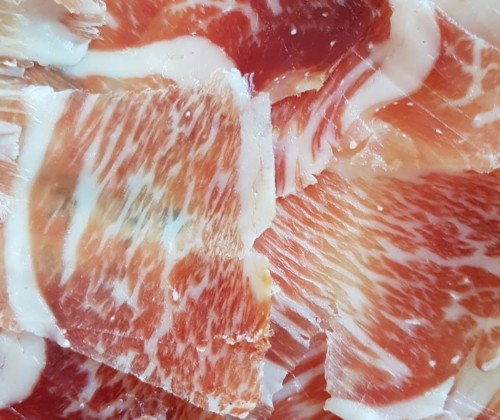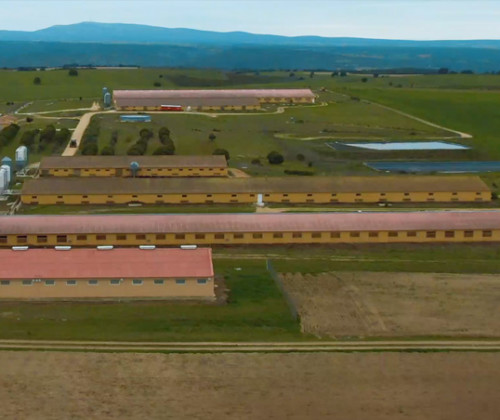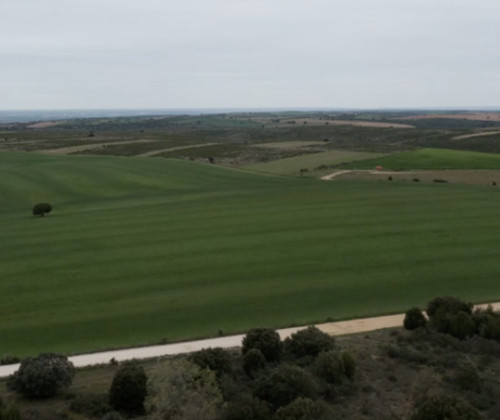Are you passionate about cured ham? Welcome to the club. In today’s article we want to give you some clues for choosing the perfect cured ham.
Whether it is an Iberian or a white pig cured ham, its flavour is exquisite and it is an important source of proteins, calcium, B vitamins and minerals.
Do you know how to nail it when buying and keeping a cured ham? With La Granja de Chico and Afinado cured hams, by Cárnicas Chico, it is very easy.
Keep on reading and become a real expert.
Tips for choosing a good ham and not dying in the attempt
Specialised professionals
We recommend buying it with the advice from professionals, whereas you purchase it in department stores or in shops that are near your home such as a deli.
These professionals choose the cured hams according to the quality of the product, and not only based on their price.
They know the brands and the product in depth and they can offer you the best tips.
Don’t trust bargains
Producing a good cured ham takes a lot of work because it is a product whose curing takes a certain length of time:
- White pig cured ham: 9-12 months (cellar cured ham), 12-24 months (reserve cured ham) and more than 15 months (grand reserve cured ham).
- In the case of the Iberian cured ham, the minimum curing time is 18 months, but the acorn-fed Iberian cured ham needs 36-48 months, whilst the feed-fed free-range Iberian cured ham need 28 months at least.
Quality has a price.
At Cárnicas Chico we guarantee that our cured hams reach the shops perfectly cured, because they have been checked one by one to verify that all them have been dried and salted for the appropriate length of time.

External appearance of the cured ham
Checking the external appearance of the cured ham can give us some clues about how it will be in the inside.
- Touch the cured ham that you have chosen. If when doing it your fingers sink easily, the ham is not cured enough. If, on the other hand, it is hard, the ham is too cured. The best is always a balance. This is, if the ham is optimally cured, you will be able to sink your finger slightly when pressing and you will soon feel that it is hard.
- The leg or knuckle area must be well filled with muscle and fat. This will help us to check that there is a good shape given by the fat and muscle.
- We must also check that these areas are rounded and that there are no gaps.
- We will look for homogeneity both on the surface and regarding the colour.
- External fat layer: it must have a yellowish white colour. If we see brown or orange fat this will tell us that the fat is probably oxidized or rancid. The external fat layer must cover the side of stiffle or the cushion and go on until the tip of the ham (the hip), in which we must check and visually assess that the fat thickness is 1.5 cm at least.
How to choose an Iberian cured ham
Now that we know how to choose a good cured ham, we will tell you how to choose a good Iberian cured ham.
We must pay attention to some details:
- The shape of the leg. In Iberian pigs it is long, thin and slender. Iberian pigs are “slim-legged”.
- The hoof. Another feature that helps us to distinguish an Iberian cured ham is the colour of its hoof, that is generally black. If they are worn-out that will mean that the animal was raised under free-range conditions.
- The label, that tells us the breed purity percentage and the feeding of the pig. In the case of Iberian cured hams there are 4 labels:
- Black zip tie/seal: ”Acorn-fed 100% (pure) Iberian pig cured ham”. From purebred animals raised in the dehesas and fed with natural pasture and acorns.
- Red zip tie/seal: ”Acorn-fed 50-75% (crossbred) Iberian pig cured ham”. From pigs crossbred with Duroc that have been raised in the dehesas.
- Green zip tie/seal: “Feed-fed free-range Iberian pig cured ham”. From crossbred pigs that have not been acorn-fed, but fed with natural pastures, grass and feed.
- White zip tie/seal: “Feed-fed Iberian pig cured ham”. From an Iberian pig that has not been raised under free-range conditions, but on a farm. They have been fed with feed based on cereals and legumes.
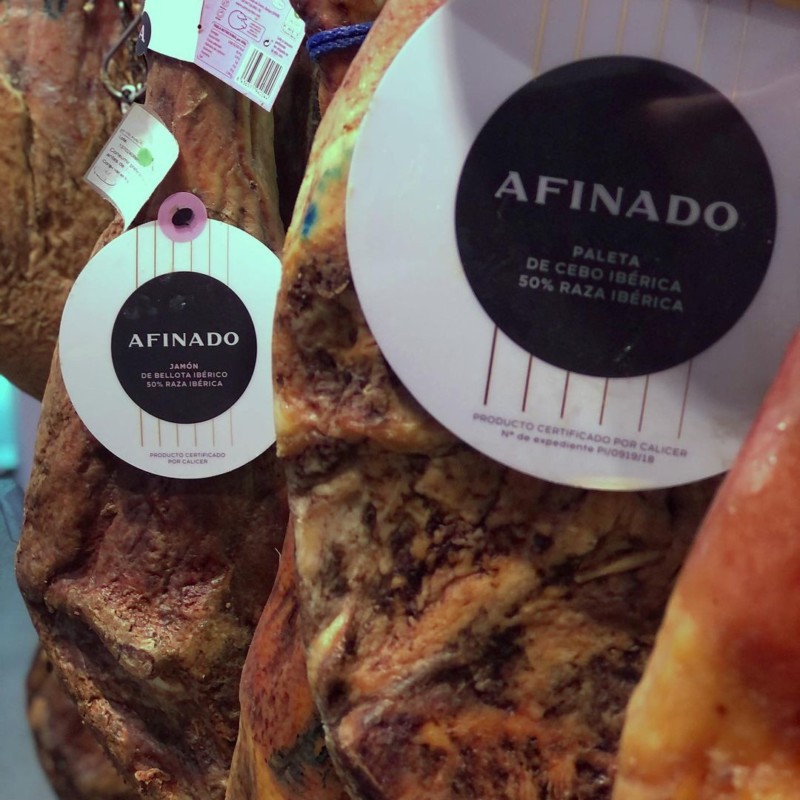
Final tips
Should we buy a cured ham or a cured shoulder? The cured shoulder normally has a strong and intense flavour, whilst that of cured ham is mellower and has more nuances, but the quality of the product is exactly the same.
We must bear in mind that cured hams are bigger (between 6.6 and 10 kg), while shoulders are smaller (4.5-6.5 kg).
Although it is a bit more difficult to carve, a shoulder can be a good option for a small family, where a ham may take too long to be consumed and may become spoilt.
To consume the cured ham at its best, we must try to take as little time as possible between its carving and its consumption. If we are going to consume it more than 24 hours after having carved it, it will be better to ask for the slices to be vacuum-packed so the cured ham does not lose its properties.
We must keep it at room temperature and in its ham stand, In a cool and dry place without draughts, such as the kitchen, and covered with a cotton tea towel so it is kept protected from light.
Important: freezing a cured ham is not a good idea, because when doing it we will change its texture and we will perceive a great loss of flavour.
If after what has been said you decide to freeze it, you must do it well: in a clean freezer, at a temperature of -18ºC at least to ensure an optimal freezing so the product keeps its properties as intact as possible.
But bear in mind that that if you want to freeze it you must do it when the ham is at its best, and not when it is almost finished or you’re going to throw it to the bin.
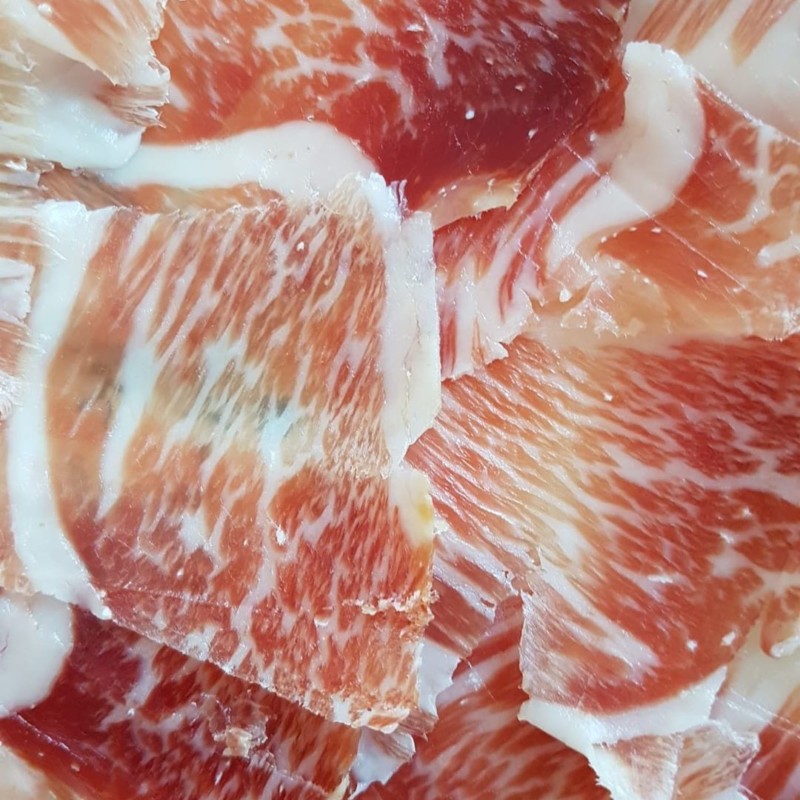
At Agroalimentaria Chico we are experts in Duroc and Iberian pig cured hams. Do you know Cárnicas Chico‘s brands La Granja de Chico and Afinado? They are gastronomic jewels that you will appreciate and enjoy with all your senses.
